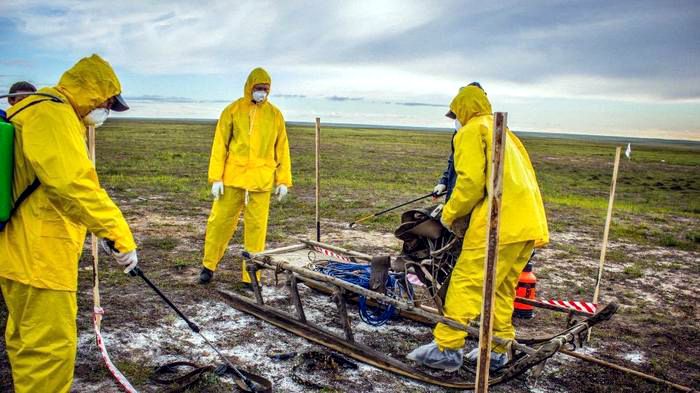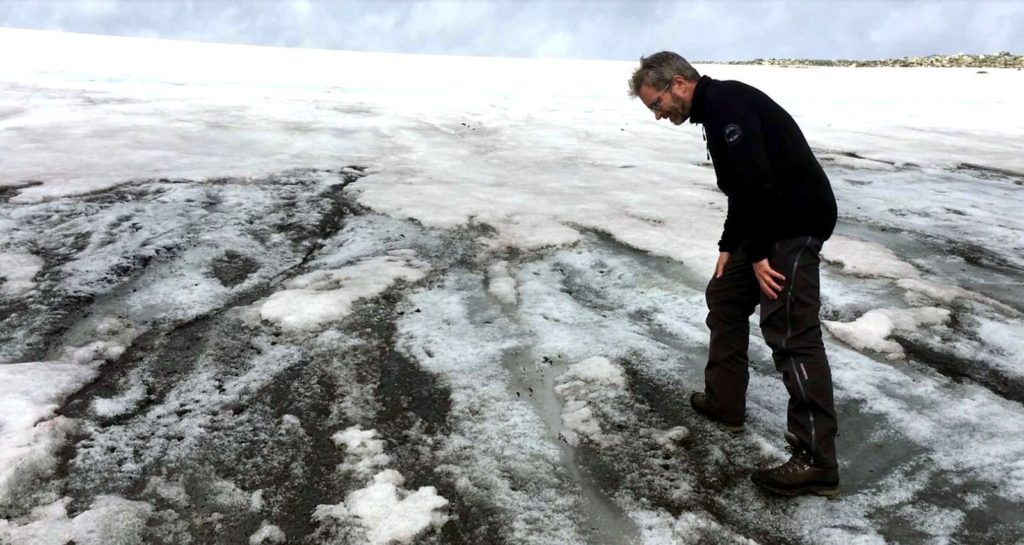An outbreak of anthrax in Siberia in 2016 caused the death of a 12-year-old-boy, hospitalization of scores of other people and the death of more than two thousand reindeer. The outbreak was traced back to an old reindeer corpse, which had melted out of the permafrost during what was the warmest Arctic summer on record.

The anthrax in Siberia outbreak generated a fear that other and perhaps even more dangerous microbes could be released from the melting ice, such as smallpox. Is it possible that malignant viruses and microbes, after hibernating in the ice for millennia, could be released by the on-going melt and pose a risk to humans?

This is certainly a scary scenario, and a fear that we have also seen in the comments to some of our posts on Facebook. Hollywood has already explored this possibility through the 2009 movie “The Thaw”, starring Val Kilmer. In this movie, a mammoth carcass is exposed by melting ice. It turns out that the carcass contains eggs from deadly parasites. They spring to life when the carcass melts, and infect first the scientists at the site, and then… However, survival of ancient parasite eggs in a carcass in the ice is very farfetched, and probably driven by the need of the filmmakers to show a visible means of infection.
However, what about more primitive organisms such as virus, bacteria and other microbes? Is there life inside the ice? Honestly, we had not given the possibility of live viruses and microbes in the ice much thought. Considering that we are actually living and working very close to the melting ancient ice patches, and drink the water running off them, it seemed like a good idea to investigate this field more carefully. It turns out that there is solid science on the presence of viruses, bacteria and other microbes in the ice, but little science on the potential risk of infection.

Life in the ice
It was believed for a long time that frozen environments were devoid of life due to the low temperatures. Investigations in the last decades have shown that this is far from being the case. It is now believed that there is actually quite a lot of microbes inside the ice. The viruses and bacteria are mostly brought to the ice by dust particles or snow. They can also end up there through animal activities. The organisms survive in various ways, mostly by taking advantage of miniscule cracks in the ice containing flowing water. Incredibly, ancient bacteria have been found to survive in 750000-year-old ice on the Tibetan plateau.
Recently, there were news reports that a French team revived a 30.000-year-old giant virus from the permafrost in Siberia and used it to infect an amoeba. While the infection was factual, it is misleading to report this as reviving the virus, as viruses are technically not alive, in contrast to bacteria.

As seen, viruses and bacteria can survive in permafrost and in very old ice. What about ice patches, where most of the archaeological finds from the ice are discovered? It turns out that viruses and bacteria can survive here as well. An ice patch in the Selwyn Mountains in Canada contained 700-year-old caribou feces, and samples of this were examined recently. The reindeer feces contained a virus, which was still able to infect a tobacco plant.
Are viruses and other microbes in the ice a potential threat to human health?
So yes, viruses and bacteria are present in ancient ice, including the ice patches where we work. This is backed by solid science. The second part of the question is then: Are they a potential threat to human health? There is no clear science here yet. Jean-Michel Claverie and Chantal Abergel, of the Aix-Marseille University School of Medicine in France, are concerned that rising temperatures could lead to ancient, but still infectious viruses thawing out of the ice. They believe this could potentially be a threat to human health.
Curtis Suttle, a virologist at the University of British Columbia in Vancouver in Canada, disagrees. He thinks that if harmful viruses were to be released by the melting ice, they would not circulate widely enough to affect human health. His opinion is that we should be much more worried about other climate change effects, such as population displacement by rising sea levels. Scott Rogers, an evolutionary biologist and professor in the Department of Biological Sciences at Bowling Green State University in Ohio, also judges the chances of ancient viruses infecting modern humans to be close to zero.
A recent review paper makes the case that microorganisms released by melting glacial ice constitute a potential serious risk to human health.

Summing up
Virus and microbes can survive thousands of years in the ice. They can theoretically infect humans, when they melt out. Experts disagree on the probability. Some say that it is a very remote possibility; others suggest we should start taking precautions, for instance when drilling for oil in the Arctic. Maybe this precaution should also be applied to glacier archaeologists, who live and work very close to the ice just at the time of year, when the ancient ice is melting.
Being a glacier archaeologist brings us in direct contact with the ancient ice. We drink the meltwater, sometimes without boiling or purifying it. This has not resulted in any infections during ten years of fieldwork. Perhaps the chances of infection are very remote, as some experts suggest. Reducing it to zero would entail boiling all the water or using purification tablets. Boiling the water would require bringing a lot of extra fuel with us during fieldwork. Purification tablets also have their issues and are more suitable as a short-term solution. Even so, I think we need to have a team-talk on this subject before heading out next field-season…
Sources and further reading: Siberian Times, Scientific American 1, Scientific American 2, Nature, New Scientist, Miteva 2007
